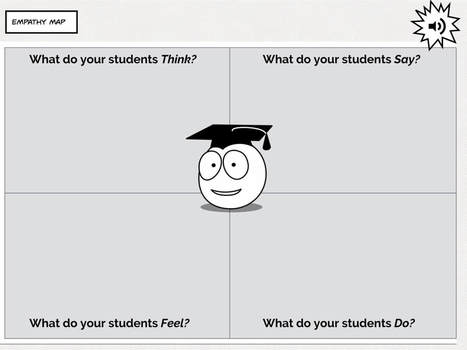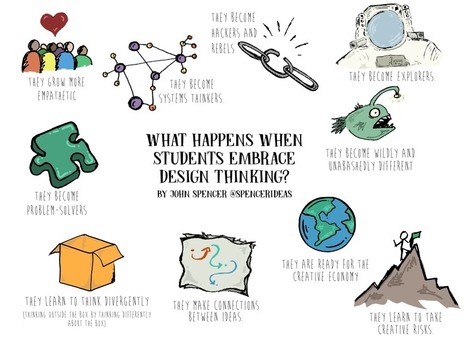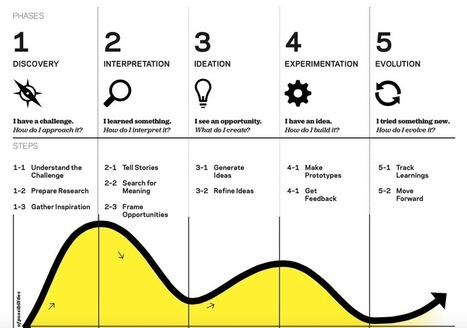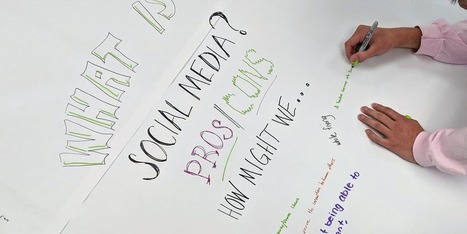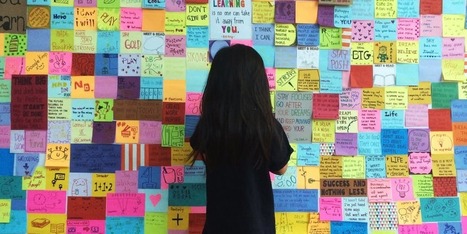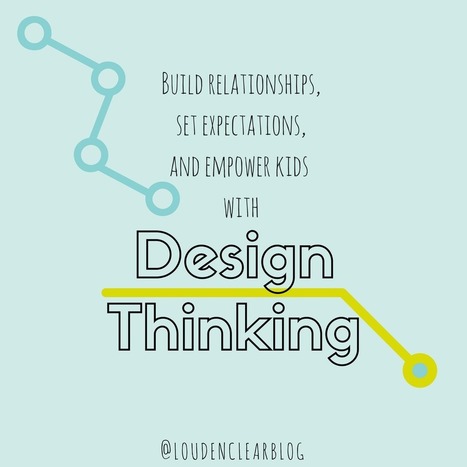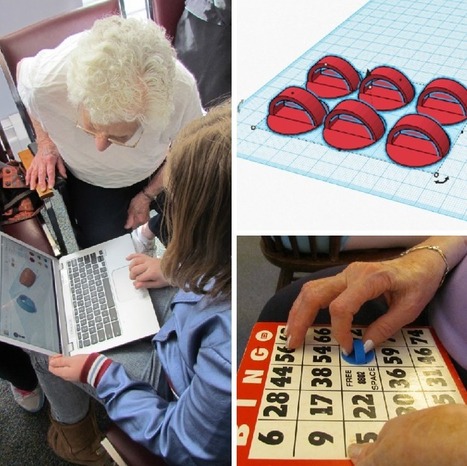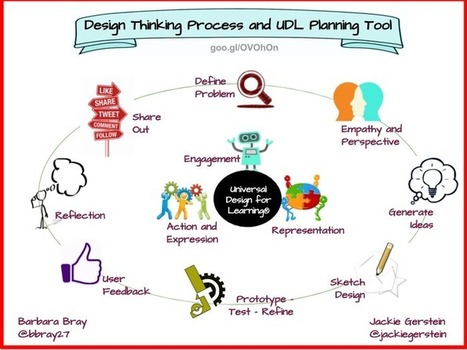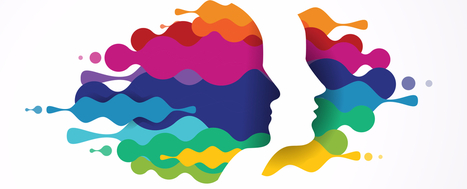 Your new post is loading...
 Your new post is loading...

|
Scooped by
John Evans
|
As the final project of the school year, I asked a group of my gifted 4th through 6th graders to design and prototype a new type of shoe. In a recent post from Idea U, Why Everyone Should Prototype (Not Just Designers), Chris Nyffeler, IDEO Executive Design Director, discussed the purpose and value of prototyping:
When we say prototype, that’s anything that gets the idea in your head into an artifact people can experience and offer feedback on.
You use prototyping to process the ideas themselves and to help you think through the idea better.
It’s not that you process your idea and then communicate it through a prototype. You actually use prototyping to process the ideas themselves and to help you think through the idea better.
Keep early prototypes quick and scrappy. By starting with tools that are familiar to you and easy to use, you can quickly create something tangible that will allow you to gather feedback and learn what’s working and what’s not.

|
Scooped by
John Evans
|
"In the old days (like three years ago), you had to tell computers what to do. They are increasingly figuring it out on their own. The rise of artificial intelligence (AI), code that learns, is reshaping life and work. We’re a couple of years into a new era driven by exponential technology. Everyone is experiencing high rates of change—and things will continue to speed up for our kids. That makes three new literacies more important than ever:
* Design thinking skills: an iterative problem-solving approach; * Entrepreneurship skills: taking initiative and learning to deliver value; and * Social skills: collaborating on diverse teams. For those new to design thinking, it’s a mindset and methodology for dealing with complexity. We’ve assembled articles, podcasts and case studies to help you and your community get started. Design thinking is similar to computational thinking (which has roots in Computer Science) so we added a few resources on that as well."

|
Scooped by
John Evans
|
If you’ve ever felt stuck in a job and are considering a new career, figuring out exactly what you want to do — and how you’ll get there — can be overwhelming.
What if you could identify and test out different career possibilities, and even game out and compare how they would unfold over the next five years?
You can using a solution-focused method called “Design Thinking,” which helped product designers create Apple’s built-in mouse and other consumer electronics. Sound far-fetched? It’s not.

|
Scooped by
John Evans
|
Design thinking has been heralded by many as the key to making digital transformation more customer-focused and effective. Anecdotal evidence suggests that isn’t happening, however. Hear from experts involved in helping global organizations make the digital shift to find out why and what you can do to take advantage of this problem-solving tool.

|
Scooped by
John Evans
|
If you have just started embarking your journey through the Design Thinking process, things might seem a little overwhelming. This is why we have prepared a useful overview of the Design Thinking process, as well as some of the popular Design Thinking frameworks commonly used by global design firms and national design agencies.

|
Scooped by
John Evans
|
I want to see schools transform into bastions of creativity and wonder. But here’s the thing: this is hard to pull off. We all have curriculum maps and limited resources and standards we have to teach. We don’t always have fancy maker spaces or high-tech gadgetry. Our time is limited and so creativity is often a lofty ideal that rarely becomes a reality.
This is what I love about design thinking. It works within the standards in every subject. It’s a flexible approach that you can use with limited resources. It isn’t something new that you add to your crowded schedule. Instead, it’s an innovative approach to the work you are already doing — a process designed specifically to boost creativity and bring out the maker in every student.

|
Scooped by
John Evans
|
Every day, I ask my kids, “What did you make in school today?” Too often, they can’t give me an answer. But on the days that they do, their eyes light up and they passionately describe their projects. It’s in those moments that I am reminded that making is magic.
The needs of the twenty-first century demand new approaches to learning. Today, student success requires skills for collaboration, creativity, critical thinking, and problem solving, and these skills are increasingly becoming a focus in both K-12 and higher education settings. But twenty-first century learning needs to be much more if we are to expect young people to both navigate an unknown and complex future and meet the challenges that accompany it. We need change-makers, people who will redefine problems, inspire new ideas, take informed risks, and never stop learning. Change-makers implement and evolve solutions that aim to better the individual and the whole, be it a classroom, a school, a community, or a society. This is the approach of a designer and the focus of this publication. Design touches all aspects of our world. As this publication shows, designers work to impact the human experience, and they generally do this with particular mindsets that encourage looking at challenges as opportunities for design. Four mindsets typically guide the behavior of a designer: human-centered, collaborative, optimistic, and experimental. Designers also often act in a particular way, following a process that helps them generate and evolve ideas, beginning with problem-defining and empathy, using synthesis and prototyping to develop strategic ideas, and ending with implementation. Taken together, how designers think and act make for design thinking, a human-centered approach to creative thinking and problem solving. Thinking and acting as a designer and, in turn, employing design thinking are powerful ways to encourage people to become change-makers in education.
Via Edumorfosis

|
Scooped by
John Evans
|
I had the opportunity to facilitate a workshop on design thinking for educators at the New Mexico Association for the Gifted Fall Institute. Here is a round-up of what we did.

|
Scooped by
John Evans
|
In an age of creators, makers, and innovators, we hear of the concept design thinking too often. What is design thinking? More importantly, can design thinking help you as an educator in your classroom?

|
Scooped by
John Evans
|
In the Product Design program at Stanford, seniors have the opportunity to walk through the entire design process, from conception to execution, over the course of six months. Design thinking is an approach to creative problem-solving that uses a framework that begins with building empathy. The goal of this process is to fully understand the deeper needs that a person or group faces in order to uncover the heart of the problem in order to create a truly meaningful and effective solution.

|
Scooped by
John Evans
|
hen employing Design Thinking in the classroom, documenting each step in the process presents a challenge to teachers as well as students. However, the multimedia capabilities of Book Creator offer up a robust solution to this problem.
First, with Book Creator, students can use a variety of media to document their work. Next, teachers can create multimedia templates to guide and scaffold their students through the Design Thinking process. Finally, completed design books can be published in a number of ways, allowing students to showcase not only their completed work but their thinking along the way.

|
Scooped by
John Evans
|
The Global Day of Design just wrapped up on May 2nd. If you want to see what happens when 80,000+ students embrace design thinking, check out the Twitter stream and #GDD17 hashtag!
Students from six different continents (over 20 countries) participated and rocked this event in the second year in existence. Teachers and entire schools carved time out for students to not only beginning with empathy, not only brainstorm and navigate ideas, but to make, create, build, and design while in school.
This was only one day, and although the event was a success for our students, the real question is: What happens when students embrace design thinking beyond one day?
|

|
Scooped by
John Evans
|
Design thinking provides a way to think about creative work and problem-solving. It starts with empathy, working to really understand the problems people are facing before attempting to come up with ideas and create solutions.

|
Scooped by
John Evans
|
As schools focus on building students’ capacity to learn and solve problems outside the formal classroom, many educators have embraced “design-thinking” strategies as a promising approach.
The appeal of design thinking, which evolved out of strategies to improve product design, is that it fosters brainstorming and collaboration skills that are valuable in a changing world where many challenges don’t have textbook answers.
But do design-thinking strategies actually improve a student’s performance? Perhaps more important, will students use those strategies outside of school? Until now, both questions have been hard to measure.
A new study by researchers at the Stanford Graduate School of Education (GSE) provides some answers: yes and yes.

|
Scooped by
John Evans
|
A few weeks ago, Aaron, a student in my high school elective class, mentioned he didn’t use social media very often. I’ll admit I was a littl

|
Scooped by
John Evans
|
Design thinking provides a great structure for people of all ages to go through the creative process. The 10 activities I share below can be done with any age group, and they are a lot of fun!

|
Scooped by
John Evans
|
"When educators first consider redesigning learning spaces, they might immediately conjure up mental images of free-flowing Starbucks lounges or something out of the Cult of Pedagogy blog’s Classroom Eye Candy series. Yet the impulse to tackle aesthetics first is often premature, according to Rebecca Hare, who teaches art and design in St. Louis and has served as a design consultant for various schools.
“So often I work with schools across the country going through this process, and everybody comes to me with the catalog and says, ‘We love these tables, what do you think?’” says Hare, who, together with tech director Bill Selak, will present a strand of sessions around designing thoughtful spaces for learning at the upcoming CUE Bold conference, May 5-6 in Laguna Beach, Calif. “Nobody comes to me and says, ‘We have this incredible vision for learning, what do you think?’ So you really have to walk people back to the higher vision.”"

|
Scooped by
John Evans
|
* How do we help young people prepare for lives full of novelty and complexity? After a two-year study of the influence of artificial intelligence(and exponential change more broadly) and a dozen community conversations, my team concluded there are four new learning priorities:
* Innovation mindset: a combination of growth mindset, maker mindset, and team mindset — in short, young people should learn to recognize the value of effort, initiative, and collaboration.
* Social-emotional learning: managing yourself and social interactions, making good decisions.
* Design thinking: attacking complex problems with empathy and iteration — using a repetitive process with the aim of approaching a desired goal, target, or result.
* Self-directed learning: staying curious, building deep subject expertise — repeatedly — and creating lifelong learning habits."

|
Scooped by
John Evans
|
Previously in this series, we explored why collaborative projects are vital for students. But if we’re being honest, creative projects are really hard to pull off with students. We will now explore how design thinking can work as a roadmap for getting the most out of collaborative projects.

|
Scooped by
John Evans
|
"With two design thinking practices, you can make small, iterative changes to foster a creative culture in your school or classroom."

|
Scooped by
John Evans
|
I am a procrastinator–to say the least–so as school was quickly approaching, I began to scramble to put together our first few days. I combed Pinterest, retweeted ideas, organized my Pocket with a BTS category. But still nothing stuck out for me. Thankfully, in mid-July I was part of a grant process that included two days of design thinking. My friends and I loved the process so much, that we thought “Why don’t we start the school year with design thinking?”
So we did.
And it was the best first days I have had in twelve years. I’m not even exaggerating.

|
Scooped by
John Evans
|
"Rich Lehrer knew that 3D printers could do more than spit out keychains and Yoda heads. In 2013, he led a group of eighth graders at the Brookwood School in Manchester-by-the-Sea, Massachusetts that designed and printed a prosthetic hand for Lehrer’s then 3-year-old son, Max.
. . . it was a suggestion from a colleague that unleashed the full potential of 3D printing and Making as a way to teach middle school students design thinking skills—as well as empathy and collaboration.
But it was a suggestion from a colleague that unleashed the full potential of 3D printing and Making as a way to teach middle school students design thinking skills—as well as empathy and collaboration.
The idea? Have the students work with senior citizens to identify real world problems that could be addressed by designing and prototyping solutions."

|
Scooped by
John Evans
|
"If there is a makerspace in your school, it may be down the hall, in the library, or in another building. If there is someone other than the teacher managing the makerspace or there is a schedule for the school, your kids may only be able to use it once a week or month. Some makerspace activities may be focusing on how to use the resources available and may not be connecting the activities to the curriculum or around a real world problem. If this is how the makerspace is set up in your school, then your kids may not have access to the resources, materials, and tools when they need them, especially for STEM or STEAM.
In deciding what resources you need based on the learners you have, you may first need to determine how your learners learn best, what projects you plan to do, how you can set up a makerspace in your classroom, and much more. This is why we decided to create a planning tool for makerspaces in the classroom for you using the Design Thinking Process and Universal Design for Learning®."

|
Scooped by
John Evans
|
In her early teaching years, Wanny Hersey learned how hands-on projects—which would eventually become known as “making”— could engage and motivate her English students like nothing she’d seen before. She’d witnessed the heartbreak of watching a one-size-fits-all education system fail to engage students who needed it most. And the joy of nurturing students’ natural desire to solve problems and create.
Design thinking gives purpose to making. It's a problem-solving, action-oriented, human-centered process that we engage in to assist our students in their journeys as makers.
These experiences as a teacher and administrator inspired her to found Bullis Charter school—with both her past and future students in mind. The award winning K-8 public school is focused on design thinking, making, and project-based learning—all of which Wanny believes engage children, and grow their natural curiosity.
Wanny spoke to EdSurge about how making builds empathy, why it’s important to compensate teachers for continuously learning, and her advice for administrators who want to drive change through design thinking.
|
 Your new post is loading...
Your new post is loading...
 Your new post is loading...
Your new post is loading...















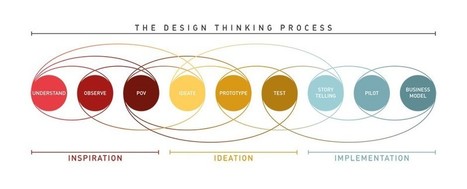
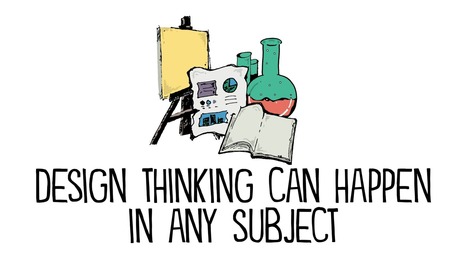
![[PDF] Thinking & acting like a designer: How design thinking supports innovation in K-12 education | iPads, MakerEd and More in Education | Scoop.it](https://img.scoop.it/1N5gbB-s78kmmrEonqZOYTl72eJkfbmt4t8yenImKBVvK0kTmF0xjctABnaLJIm9)



